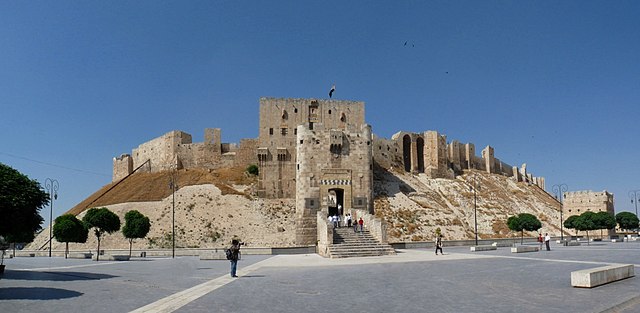We just learned about the
Prague Castle.
Another ancient castle is the
Citadel of Aleppo in Syria.
It is one of the oldest and largest castles in the world, built over 2000 years ago, around 300 AD.
The hill where this castle was is so old that people say Abraham from the Bible had his sheep up on this hill.
The conqueror Alexander the Great took over this castle, as did the Roman Empire, the Mongols from China, the Ottoman Empire and the French and Syrian people.
The Citadel is about 1,500 feet long and 1,000 feet wide, and over 150 feet tall.
It used to be covered with shiny blocks of limestone, and some of those blocks are still there.
There is a moat around it that is 72 feet deep and 98 feet wide, made over 800 years ago.
This castle was very hard to take over, because people coming in would have to take over six turns on a ramp that
had machicolations above them where people could drop rocks or hot oil on them from above.
There are also secret passageways all over the citadel, and even underground passages going over 400 feet below the building.



(from: wikipedia -
citadel of aleppo)
Kid Facts - Blast from the past: Nunavut












